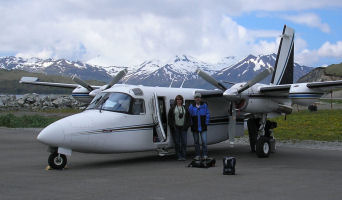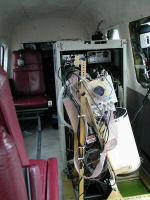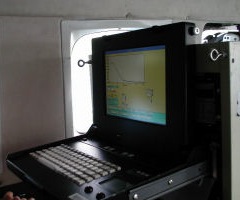Atmospheric Remote Sensing: Instruments
FLOE Aircraft Deployments
Beechcraft King Air
The King Air 200 is a twin-engine aircraft owned and operated by the California State Department of Fish and Game. They use the aircraft to stock mountain lakes with fish. This means that large cutouts have been put in the floor through which the fish can be dropped into the lakes without landing. One of these is an ideal window for the lidar. Other work has been done in several King Air 90 aircraft, which are smaller, and therefore more economical, than the 200. The center photo is the plane that was used in 2003. Different planes of the same type were used in other years. The photo on the right is the optics package and the back of the rack in the smaller version.
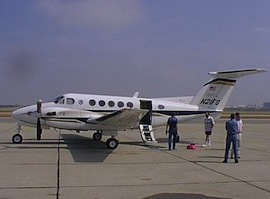
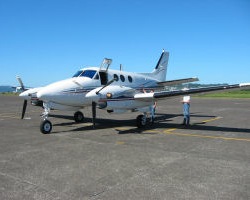
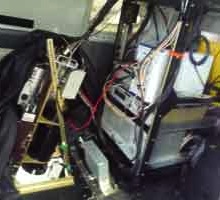
Casa
As part of the JUVESU program, we have flown on a Spanish Casa airplane of the Spanish space agency INTA. This is a twin-engine cargo plane that is used for aerial photography. It has two large camera ports in the bottom. One is used for the lidar and the other is used by INTA for simultaneous multispectral imagery. The center picture is our lidar mounted in one of the camera ports. This shows the black laser housing on the left of the main lidar plate and the white telescope tube on the right. The picture on the right is the operator station showing the rack of electronics. The laser cooling unit and power supply are at the bottom, the computer is next with the monitor and keyboard at the top, and at the top of the rack are the power supply for the photomultiplier tube and timing electronics.
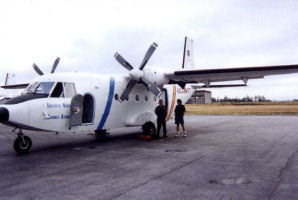
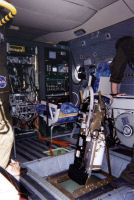
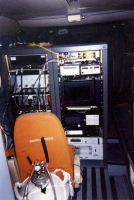
Cessna Cardinal
The smallest aircraft that we have operated from is a 4-seat Cessna Cardinal. This plane is owned and operated by Dr. Jay Palmer, and is ideal for testing. It was used in the herring survey and in several investigations of thin plankton layers in Washington State. We modified the aircraft by installing a 8" by 10" window and by installing a 100-A alternator so that we could operate the lidar and still have enough electrical power for the airplane. Originally, the operator sat in the right-hand seat facing backwards. More recently, the system was equipped with a radio modem and was operated from the ground with an Ethernet-connected laptop.
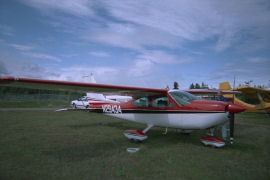
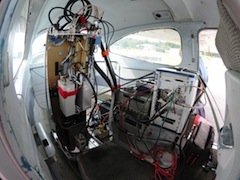
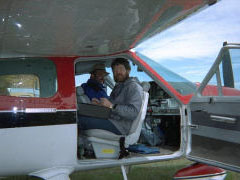
DeHaviland Twin Otter
For several deployments, the lidar was operated on one of the Twin Otters operated by the NOAA Aircraft Operations Center in Tampa, Florida. The center photograph shows the equipment rack on the left. This contains the laser power supply, and computer, and some timing electronics. To the right is the optics package. The white cylinder is the receiver telescope with the detector module on the top. The laser is out of sight behind the telescope. Both the telescope and the laser are pointer through the large camera port in the bottom of the aircraft. The components of the optical package are labeled in the photograph on the right.
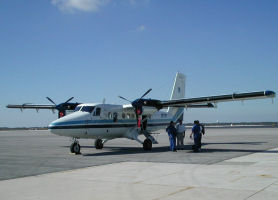
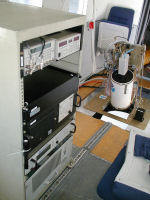
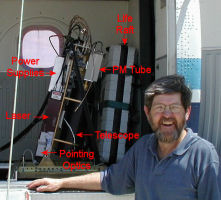
Partenavia Observer
The menhaden work in Chesapeake Bay was done on a Partenavia Observer owned and operated by the U.S. Department of Fish and Wildlife (photo on left). We have also flown on a similar plane owned and operated by the California State Department of Fish and Game (center photo). These are 6-seat, twin-engine aircraft that are very economical to operate.
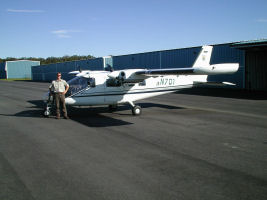
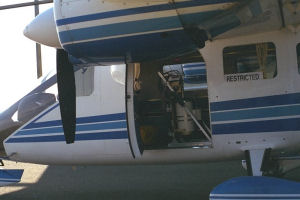

Piper Seminole
For sardine surveys off the southern California coast, we used a Piper Seminole. For this work, the LIDAR was configured to operate without an operator. The system came on automatically when the pilot switched on the payload power. At this point, the laser was operating, but shuttered. When at the survey area, the pilot remotely opened the shutter with a second switch and data collection started automatically. At the end of the survey, the pilot switched off payload power and returned to the airport.
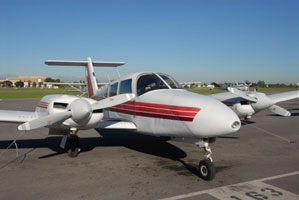
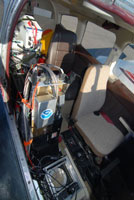
Rockwell Aerocommander
For several experiments in Oregon, Washington, Alaska, and Norway, we have used one of several Rockwell Aerocommanders. The aircraft on the left is one of these. This is a nice airplane for this work. The size is just about right - we find the Partenavia to be a little cramped and the Twin Otter is larger than what we need. The high-wing configuration gives a good view of the ocean surface.
